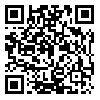BibTeX | RIS | EndNote | Medlars | ProCite | Reference Manager | RefWorks
Send citation to:
URL: http://jdisabilstud.org/article-1-2532-fa.html

 ، حسین مهدیان*2
، حسین مهدیان*2 
 ، فریده حمیدی3
، فریده حمیدی3 

2- استادیار، گروه روانشناسی، واحد بجنورد، دانشگاه آزاد اسلامی، بجنورد، ایران
3- دانشیار، گروه علوم تربیتی، دانشکدهٔ علوم انسانی، دانشگاه تربیت دبیر شهید رجایی، تهران، ایران
چکیده
زمینه و هدف: اختلال نوشتاری اختلال پیچیدهتر و شایعتر مهارت زبانی در دوران تحصیل است و مبتلایان به آن معمولاً در کارکردهای اجرایی ازجمله حافظهٔ فعال کلامی و انعطافپذیری شناختی مشکلاتی دارند؛ ازاینرو، پژوهش حاضر با هدف مقایسهٔ اثربخشی آموزش راهبردهای شناختی و فراشناختی و آموزش ایروبیک بر حافظهٔ فعال کلامی و انعطافپذیری شناختی در مبتلایان به اختلال نوشتاری انجام شد.
روشبررسی: این مطالعه نیمهآزمایشی با طرح پیشآزمون و پسآزمون با دو گروه آزمایش و یک گروه گواه بود. جامعهٔ پژوهش را دانشآموزان پایههای دوم و سوم ابتدایی مبتلا به اختلال نوشتاری شهر مشهد در سال تحصیلی ۹۸-۱۳۹۷ تشکیل دادند. نمونهٔ پژوهش ۳۶ فرد داوطلب واجد شرایط بودند که با روش نمونهگیری هدفمند انتخاب شدند و با روش تصادفی بهکمک قرعهکشی در سه گروه دوازدهنفری قرار گرفتند. گروه آزمایش اول بیست جلسهٔ ۴۵دقیقهای در آموزش راهبردهای شناختی و فراشناختی و گروه آزمایش دوم بیست جلسهٔ ۴۵دقیقهای در آموزش ایروبیک شرکت کرد؛ اما برای گروه گواه آموزشی ارائه نشد. جمعآوری دادهها با استفاده از آزمون حافظهٔ فعال کلامی استنفورد-بینه (روید، ۲۰۰۳) و آزمون انعطافپذیری شناختی ویسکانسین (گرانت و برگ، ۱۹۴۸) صورت گرفت. برای تحلیل دادهها از روشهای خیدو، تحلیل کوواریانس تکمتغیری و آزمون تعقیبی بونفرونی در نرمافزار SPSS نسخهٔ ۲۵ و سطح معناداری ۰٫۰۵ استفاده شد.
یافتهها: براساس یافتهها، گروههای آزمایش و گواه از نظر جنسیت، پایهٔ تحصیلی، سن و بهرهٔ هوشی باهم تفاوت معناداری نداشتند؛ همچنین، گروههای آزمایش و گواه پس از حذف اثر پیشآزمون در مرحلهٔ پسآزمون از نظر حافظهٔ فعال کلامی و انعطافپذیری شناختی دارای تفاوت معناداری بودند (۰٫۰۰۱>p). بهعبارتدیگر، هر دو روش آموزش راهبردهای شناختی و فراشناختی و آموزش ایروبیک درمقایسه با گروه گواه، حافظهٔ فعال کلامی و انعطافپذیری شناختی را در مبتلایان به اختلال نوشتاری افزایش داد (۰٫۰۰۱>p). علاوهبرآن، آموزش راهبردهای شناختی و فراشناختی درمقایسه با آموزش ایروبیک باعث افزایش بیشتر حافظهٔ فعال کلامی (۰٫۰۰۱>p) و انعطافپذیری شناختی (۰٫۰۰۳=p) در آنان شد.
نتیجهگیری: نتایج حاکیاز اثربخشی هر دو روش در بهبود حافظهٔ فعال کلامی و انعطافپذیری شناختی در مبتلایان به اختلال نوشتاری و اثربخشی بیشتر روش آموزش راهبردهای شناختی و فراشناختی درمقایسه با روش آموزش ایروبیک است؛ درنتیجه، میتوان از هر دو روش بهویژه روش آموزش راهبردهای شناختی و فراشناختی برای بهبود حافظهٔ فعال کلامی و انعطافپذیری شناختی استفاده کرد.
| بازنشر اطلاعات | |
 |
این مقاله تحت شرایط Creative Commons Attribution-NonCommercial 4.0 International License قابل بازنشر است. |


